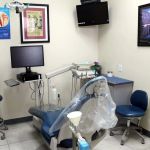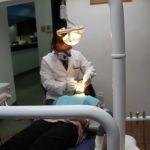
Common Dental Myths You Should Stop Believing: Facts vs Fiction
- Myth #1: Sugar Causes Cavities Instantly
- Myth #2: You Should Brush Immediately After Eating
- Myth #3: Whitening Products Are Bad for Your Teeth
- Myth #4: Gum Disease Only Affects Older Adults
- Myth #5: You Don’t Need to Floss if You Brush Regularly
- Myth #6: Dental Visits Are Only for When You Have Pain
Myth #1: Sugar Causes Cavities Instantly
Many people believe that sugar directly leads to cavities, but that's not entirely true. Sugar can contribute to the development of cavities when it interacts with bacteria in your mouth, which produces acids that erode tooth enamel. However, it's not the sugar itself, but the frequency of sugar consumption and lack of proper oral hygiene that increases the risk. The key is to minimize sugar intake and brush your teeth regularly to remove bacteria and plaque.
Myth #2: You Should Brush Immediately After Eating
It’s a common myth that brushing your teeth immediately after eating, especially after consuming acidic foods like citrus, is the best way to protect your enamel. In fact, brushing right after a meal can actually damage your enamel, which becomes softened by the acids. It's best to wait about 30 minutes before brushing to allow your enamel to re-harden. In the meantime, rinse your mouth with water to neutralize acids and help freshen your breath.
Myth #3: Whitening Products Are Bad for Your Teeth
Whitening products are often seen as harmful to teeth, but modern whitening agents, when used correctly, are safe for most people. Overuse or misuse, however, can lead to tooth sensitivity or gum irritation. It's important to follow the instructions and consult with your dentist before using any whitening products, especially if you have sensitive teeth or existing dental issues. Professional whitening treatments tend to be the safest and most effective option.
Myth #4: Gum Disease Only Affects Older Adults
While it's true that gum disease is more common in older adults, it can affect people of all ages, including teenagers and young adults. Poor oral hygiene, smoking, genetics, and certain health conditions can contribute to gum disease at any stage in life. Regular brushing, flossing, and dental check-ups can help prevent gum disease regardless of your age.
Myth #5: You Don’t Need to Floss if You Brush Regularly
Many people believe that brushing alone is sufficient to maintain oral health, but this is a myth. Brushing removes plaque from the surfaces of your teeth, but flossing is the only way to remove plaque from between your teeth and along the gumline. Flossing at least once a day is essential to prevent cavities, gum disease, and bad breath. It’s a simple habit that can make a big difference in your overall oral health.
Myth #6: Dental Visits Are Only for When You Have Pain
Dental visits should not only be for when you experience pain or discomfort. Regular check-ups and cleanings are crucial for preventing dental issues before they become serious. Your dentist can identify early signs of tooth decay, gum disease, and other oral health problems that may not yet be causing pain. A routine visit every six months is ideal for maintaining optimal oral health.
As you can see, there are many common dental myths that can mislead you about how to care for your teeth. By debunking these myths, you can make more informed decisions about your oral health. Remember, the best way to maintain healthy teeth and gums is to follow a balanced oral hygiene routine, visit your dentist regularly, and avoid falling for misleading myths. Don’t let myths stand in the way of your dental health—take control and keep your smile shining!
If you're looking for reliable dental care products or need more information about maintaining optimal oral health, consider visiting our recommended dental products page today!







 Assembly Square Family Dental4.0 (4 review)
Assembly Square Family Dental4.0 (4 review) Charles A. Messa Jr. DDS4.0 (14 review)
Charles A. Messa Jr. DDS4.0 (14 review) Ukani Dental4.0 (95 review)
Ukani Dental4.0 (95 review) Dr. Sandoval Office of Pedro M Sandoval DDS4.0 (70 review)
Dr. Sandoval Office of Pedro M Sandoval DDS4.0 (70 review) Dr. "K" Orthodontics5.0 (318 review)
Dr. "K" Orthodontics5.0 (318 review) Community Health Care - Lakewood Family Dental Clinic3.0 (23 review)
Community Health Care - Lakewood Family Dental Clinic3.0 (23 review) The Importance of Oral Health Education During Pregnancy for a Healthy Pregnancy
The Importance of Oral Health Education During Pregnancy for a Healthy Pregnancy Best Tips for Brushing Your Teeth Properly for Healthy Gums: Essential Techniques for Oral Health
Best Tips for Brushing Your Teeth Properly for Healthy Gums: Essential Techniques for Oral Health Why Skipping Dental Checkups Can Lead to Bigger Oral Health Problems
Why Skipping Dental Checkups Can Lead to Bigger Oral Health Problems Advantages of Porcelain Dental Restorations
Advantages of Porcelain Dental Restorations How Can Diabetes Cause Tooth and Gum Problems? Preventing and Managing Oral Health Issues
How Can Diabetes Cause Tooth and Gum Problems? Preventing and Managing Oral Health Issues Healthy Habits for Promoting Good Oral Health and Hygiene: Tips for a Healthy Smile
Healthy Habits for Promoting Good Oral Health and Hygiene: Tips for a Healthy Smile